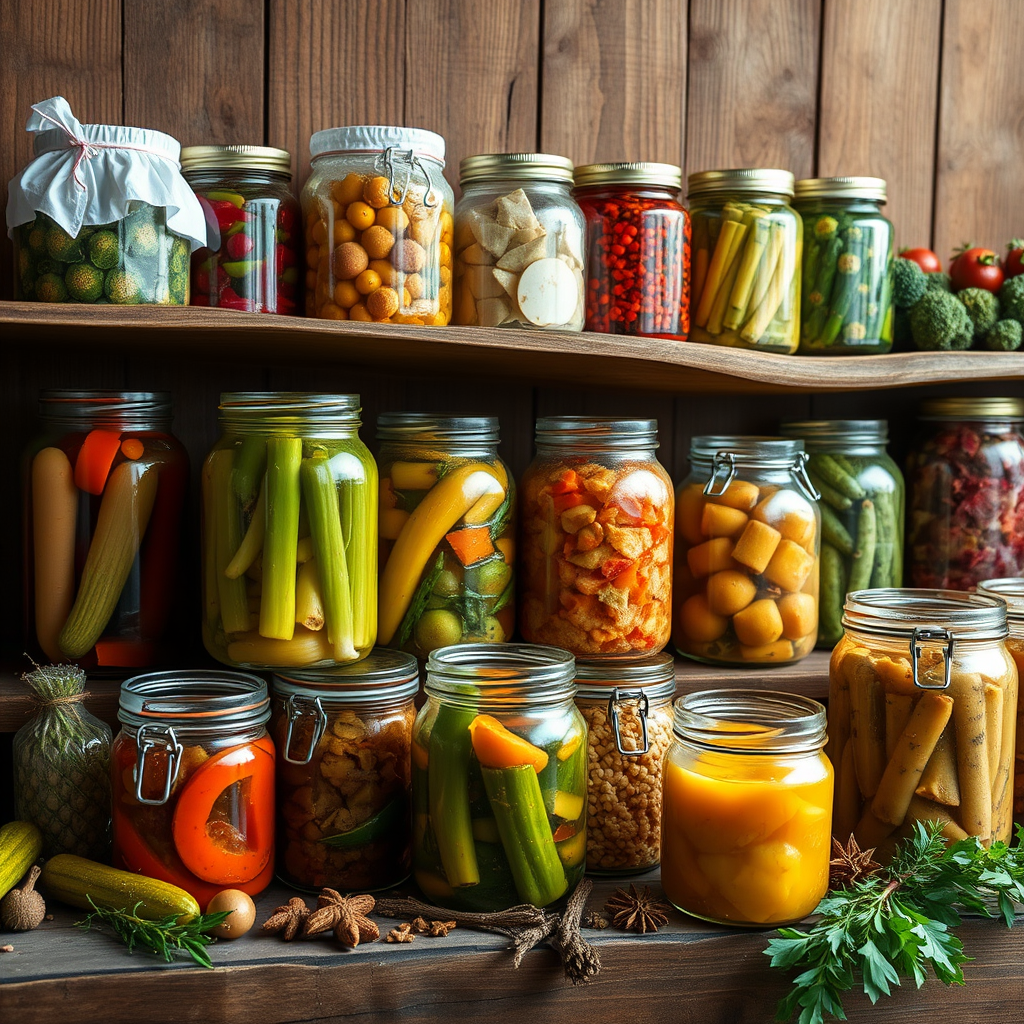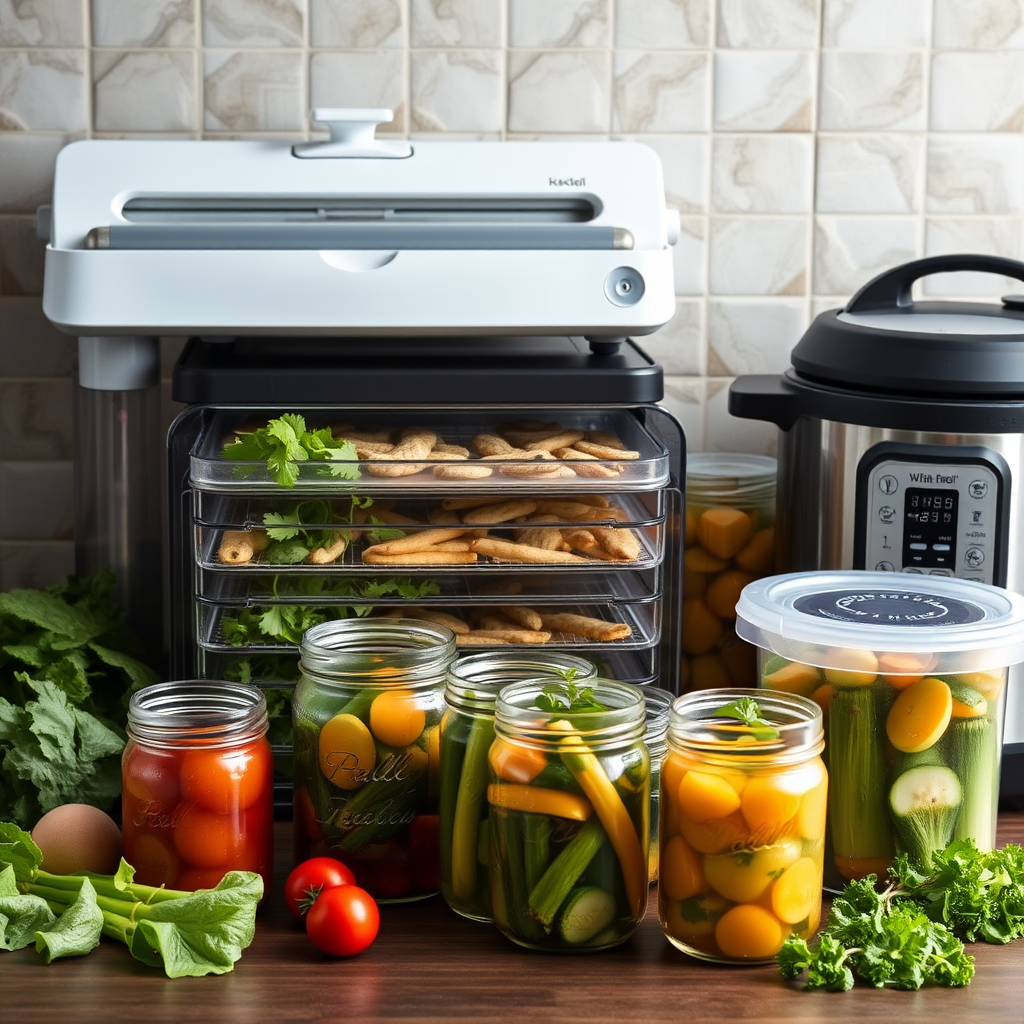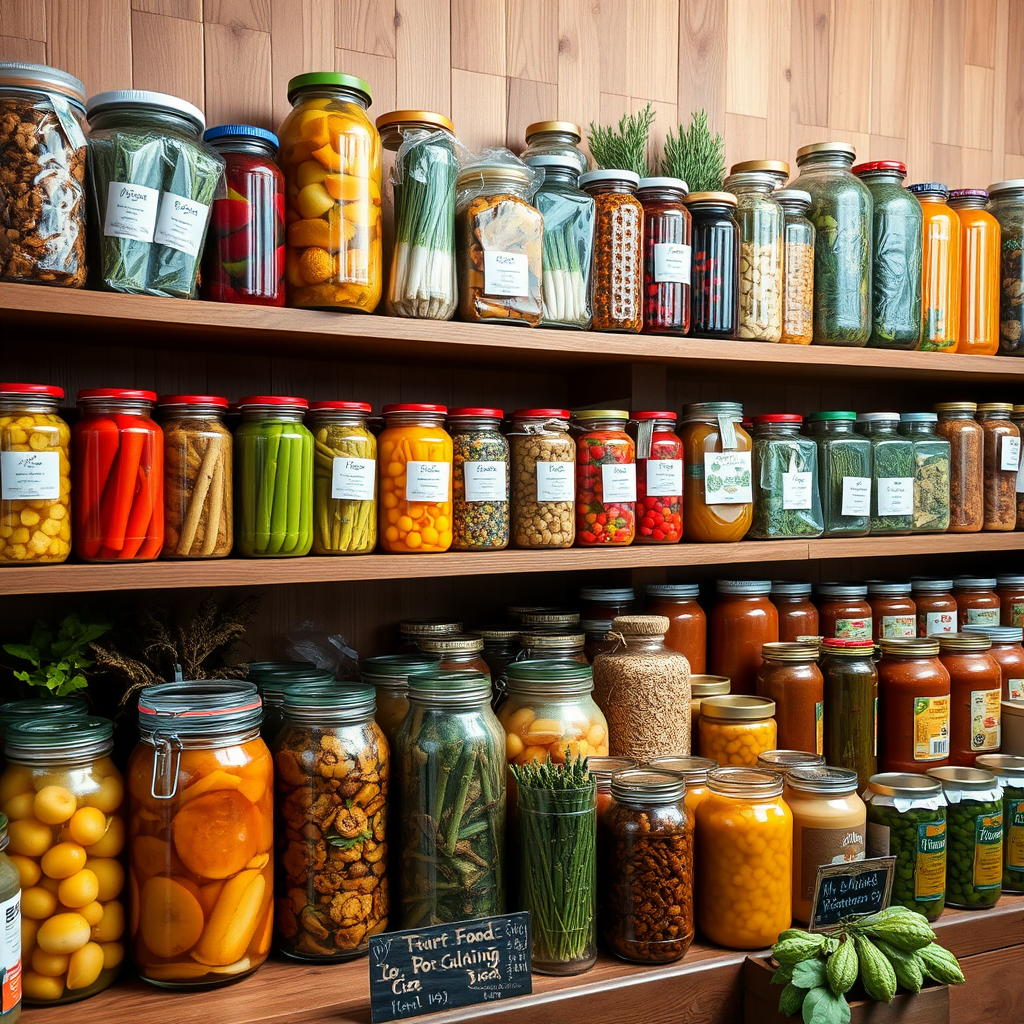Preserving Nature's Bounty: Traditional and Modern Techniques
Master the art of food preservation with both time-tested methods and contemporary approaches to extend the life of fresh ingredients and enjoy quality food year-round.

The Ancient Art of Food Preservation
Food preservation has been humanity's answer to seasonal abundance and scarcity for millennia. Our ancestors developed ingenious methods to capture the essence of peak harvest seasons, creating a culinary rhythm that sustained communities through lean times. Today, these time-honored techniques offer us not just practical benefits, but a deeper connection to the natural cycles that compose our food symphony.
The art of preservation transforms fresh ingredients into concentrated flavors, creating what we might call "edible art" – foods that tell the story of their season long after that season has passed. Each preserved item becomes a note in our pantry's composition, ready to add depth and complexity to our everyday meals.
Traditional Preservation Methods
Fermentation
The ancient alchemy of fermentation transforms simple vegetables into complex, probiotic-rich foods. From sauerkraut to kimchi, this process creates beneficial bacteria that enhance both flavor and nutrition, turning preservation into a health-promoting practice.
Salt Curing
Salt draws moisture from foods while infusing them with minerals and flavor. This method creates concentrated taste experiences – from cured olives to preserved lemons – that add intensity to seasonal dishes throughout the year.
Smoking & Drying
Air-drying and smoking remove moisture while adding distinctive flavors. These methods create concentrated ingredients like sun-dried tomatoes and smoked fish that bring depth and umami to modern cooking.
Root Cellaring
Cool, humid storage extends the life of root vegetables, apples, and other hardy produce. This gentle preservation method maintains the fresh taste and nutritional value of seasonal harvests.

Modern Preservation Innovations
Contemporary preservation techniques build upon traditional wisdom while leveraging modern technology to create safer, more efficient methods. These approaches allow us to maintain the sensory qualities of fresh foods while extending their shelf life significantly.
Vacuum Sealing & Sous Vide
Removing air from packaging dramatically extends food life while preserving texture and flavor. Vacuum-sealed foods can be stored in refrigerators or freezers for months, maintaining their original quality. Combined with sous vide cooking, this method allows for precise temperature control that preserves nutrients and creates restaurant-quality results at home.
Pressure Canning
Modern pressure canners achieve higher temperatures than traditional water bath methods, making it safe to preserve low-acid foods like vegetables, meats, and complete meals. This technique creates shelf-stable foods that retain their nutritional value and can be stored at room temperature for years.
Electric Dehydration
Electric dehydrators provide consistent, controlled drying that creates perfectly preserved fruits, vegetables, and herbs. Unlike traditional air-drying, electric dehydration ensures food safety while maintaining optimal flavor concentration and nutritional density.
Creating Your Preservation Symphony
The key to successful food preservation lies in understanding the rhythm of seasons and matching preservation methods to specific ingredients. Each technique offers unique benefits and creates different flavor profiles, allowing you to compose a diverse pantry that supports mindful eating throughout the year.
Plan Seasonally
Align preservation activities with peak harvest times to capture ingredients at their flavor and nutritional peak.
Match Methods
Choose preservation techniques that complement each ingredient's natural characteristics and intended use.
Store Properly
Create optimal storage conditions to maintain quality and safety of preserved foods over time.
Essential Preservation Equipment
- •Pressure canner for low-acid foods
- •Water bath canner for high-acid foods
- •Electric dehydrator with temperature control
- •Vacuum sealer with appropriate bags
- •Glass canning jars with new lids
- •Fermentation vessels and weights
- •Digital scale for precise measurements
- •pH strips for safety testing
Safety and Quality Considerations
Successful preservation requires attention to food safety principles while maintaining the sensory qualities that make preserved foods a joy to eat. Understanding pH levels, proper temperatures, and storage conditions ensures that your preserved foods remain both safe and delicious.
Critical Safety Points
Always follow tested recipes from reliable sources, maintain proper acidity levels for water bath canning, use appropriate pressure and temperature for pressure canning, and store preserved foods in optimal conditions. When in doubt, discard questionable items – no preserved food is worth risking your health.

Food preservation transforms the way we experience seasonal flavors, creating a pantry that sings with the concentrated essence of each harvest. By mastering both traditional and modern techniques, we create our own flavor journey that extends far beyond the growing season, bringing everyday abundance to our tables throughout the year.
Whether you're fermenting vegetables, pressure canning garden produce, or vacuum-sealing peak-season ingredients, each preservation method adds a unique note to your culinary symphony, creating a harmonious blend of tradition and innovation that nourishes both body and soul.